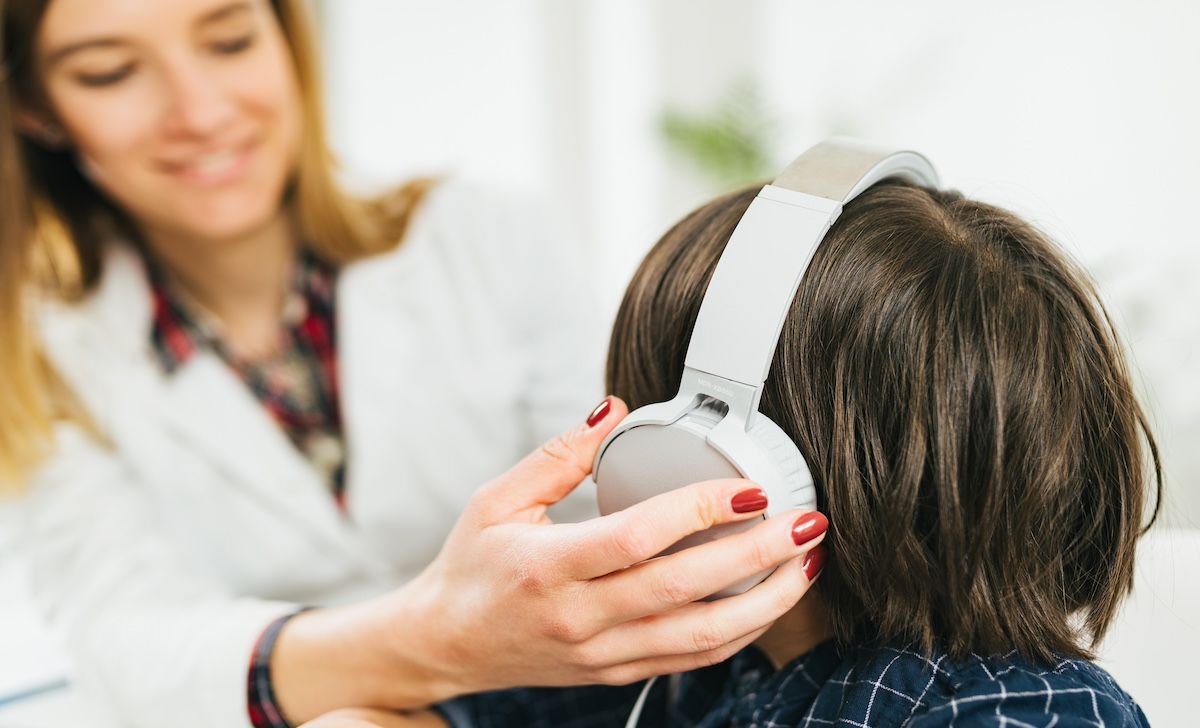- Center on Health Equity & Access
- Clinical
- Health Care Cost
- Health Care Delivery
- Insurance
- Policy
- Technology
- Value-Based Care
Five Children, 2 Hearing-Improved Ears Each: Successful DFNB9 Gene Therapy
The interim results of a single-arm trial in children with autosomal recessive deafness 9 (DFNB9) show the benefits of binaural administration of gene therapy: better hearing with no serious adverse effects.
The successful interim results of a recent single-arm clinical trial add to the evidence that gene therapy represents both “a frontier in the treatment of genetic hearing loss [and its] potential…to revolutionize the management of hearing impairment,” according to an editorial in Nature Medicine.1 The trial involved 5 patients aged 1 to 11 years with a rare form of hereditary hearing loss called autosomal recessive deafness 9 (DFNB9), and they were treated with binaural administration of human dual adeno-associated virus serotype 1 (AAV1) carrying human OTOF (hOTOF) transgene to improve their hearing loss. The interim trial outcomes were published in Nature Medicine as well.2
At baseline in the present analysis, average auditory brainstem response in both ears exceeded 95 dB | Image Credit: Microgen-stock.adobe.com

After treatment, all the pediatric patients experienced functional improvements in their auditory function and speech perception, collectively one of the trial’s secondary end points. The researchers reported they all had bilateral hearing restoration and restoration of speech, and developed the capability of sound source localization.
No serious adverse events (AEs) occurred, meeting another of the study’s secondary end points. The primary end point was dose-limiting toxicity at 6 weeks, which also did not materialize.
In work of this nature, researchers can opt to test the therapy monoaurally or binaurally. The team, noted the editorial writers, chose to simultaneously administer the gene therapy into both ears rather than give separated injections. This was to reduce the participants’ risk of developing anti-AAV neutralizing antibodies after the initial AAV exposure.
The authors have another ongoing study demonstrating the safety and efficacy of unilateral gene therapy in children with DFNB9.3 But, as the editorial writers noted, to hear with both ears creates a more complete and natural auditory experience. Importantly, binaural hearing improves clarity and understanding amid outside noise, which is not only efficient but makes it easier to hear warning signals from any direction or source, contributing to any child’s (or adult’s) day-to-day safety. It also enhances appreciation of music.
As it turned out, doubling the AAV dose resulted in no increased AEs or dose-limiting toxicity.
An earful of results
At baseline,the average auditory brainstem response threshold in both ears exceeded 95 dB in all patients. The average auditory brainstem response threshold in the right and left ears was restored at 26 weeks to 58 dB in both ears of patient 1; 75 dB/85 dB, respectively, in patient 2; and 55 dB/50 dB in patient 3. At 13 weeks, it was restored to 75 dB/78 dB in patient 4 and to 63 dB/63 dB in patient 5.
The 5 patients experienced 36 AEs, all grade 1 or 2. The most common were increased lymphocyte counts and increased cholesterol levels, each accounting for 6 of the 36. The trial is ongoing to confirm the safety and efficacy findings, the authors noted.
More about DFNB9
Biallelic mutations in OTOFcause this condition. OTOF encodes otoferlin, a protein that is necessary for sound signal transmission to occur in the inner ear. OTOF mutations, the leading cause of auditory neuropathy spectrum disorders, occur in 1% to 8% of people with congenital hearing loss.
The full-length OTOF gene exceeds the packaging capacity of AAV vectors, explained the editorial writers, so a dual-AAV delivery strategy was developed to enable the expression of full-length OTOF. As in the research team’s earlier work (with OTOF gene therapy administered to 7 children aged 1 to 8 years, in single ears of 6 children and in both ears in 1 child), the dual-AAV approach involved injection through the round window, which is an opening from the middle to inner ear.
References
1. Smith C, Zafeer MF, Tekin M. Gene therapy for hereditary deafness. Nat Med. Published online June 5, 2024. doi:10.1038/s41591-024-03004-8
2. Wang H, Chen Y, Lv J, et al. Bilateral gene therapy in children with autosomal recessive deafness 9: single-arm trial results. Nat Med. Published online June 5, 2024. doi:10.1038/s41591-024-03023-5
3. Lv J, Wang H, Cheng X, et al. AAV1-hOTOF gene therapy for autosomal recessive deafness 9: a single-arm trial.Lancet. 2024;403(10441):2317-2325.doi:10.1016/S0140-6736(23)02874-X
